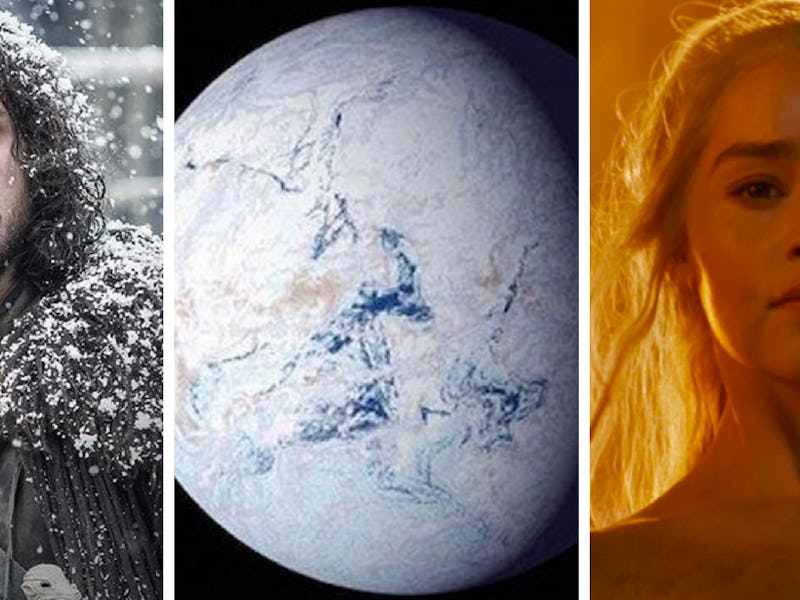Seven hundred million years ago, Earth was a song of ice and fire, but a decidedly less sexy version than the one portrayed on Game of Thrones. The Neoproterozoic Era, however, resembled frozen Jon Snow and engulfed-in-flames Daenerys Targaryen in the sense that it was a wild landscape of glaciers and erupting volcanoes. This chaotic pairing, scientists argue in a new paper, turned the planet into a “Snowball Earth.”
The Snowball Earth hypothesis, describing a phenomenon that led to mass Ice Age extinctions, was introduced in 1964 as a way to explain the anomalous glacial deposits in the planet’s geologic record. Today, the idea that Earth was once entirely covered in ice is widely accepted, but what exactly caused this glaciation has remained a mystery until now. In the journal Geography Research Letters, Harvard professors Francis Macdonald and Robin Wordsworth propose that they have figured it out: The sulfate aerosols emitted from volcanoes into the stratosphere rapidly cooled Earth, leading to a glaciation that lasted about 60 million years.
An artist rendering of the "Snowball Earth."
During that period, consistently erupting volcanoes spanned the 2,000 miles across Canada and Greenland. Previous research in the region showed that these volcanoes spurt out sulfur-rich sediments, and researchers presumed that these sediments were shot into the atmosphere in the form of sulfur dioxide. When sulfur dioxide is in the atmosphere, it blocks solar radiation.
So, Macdonald and Woodsworth took the data from previous research and plugged it into a climate model that incorporated the idea that continental drift 700 million years ago aligned these volcanoes near the equator — the same area where most planet-warming solar radiation enters Earth. From these models, they determined that two major events caused the planet to cool rapidly: Light-reflecting gas hit the atmosphere at precisely the right location, and constantly erupting volcanoes sent enough aerosols into the atmosphere to destabilize the climate.
“Cooling from aerosols doesn’t have to freeze the whole planet; it just has to drive the ice to a critical latitude,” Macdonald said in a statement. “Then the ice does the rest.”
Proglacial geological evidence of the "Snowball Earth."
The researchers note that their research, besides offering a solution to a long-standing mystery, provides essential information for the future. They argue that information about what happens when habitable zones go through sharp transitions could serve as a blueprint for studying exoplanets; rapid climate transitions on planets, they argue, may be the norm rather than the exception. In other words, by better understanding what happened here on Earth, we may have a better idea on how to move forward with research on our potential future homes. Furthermore, they write, it’s important to know what factors turned Earth into a giant ice cube so that it doesn’t happen again.
“It’s easy to think of climate as this immense system that is very difficult to change and in many ways that’s true,” Wordsworth says. “But there are have been very dramatic changes in the past and there’s every possibility that as sudden a change could happen in the future as well.”
